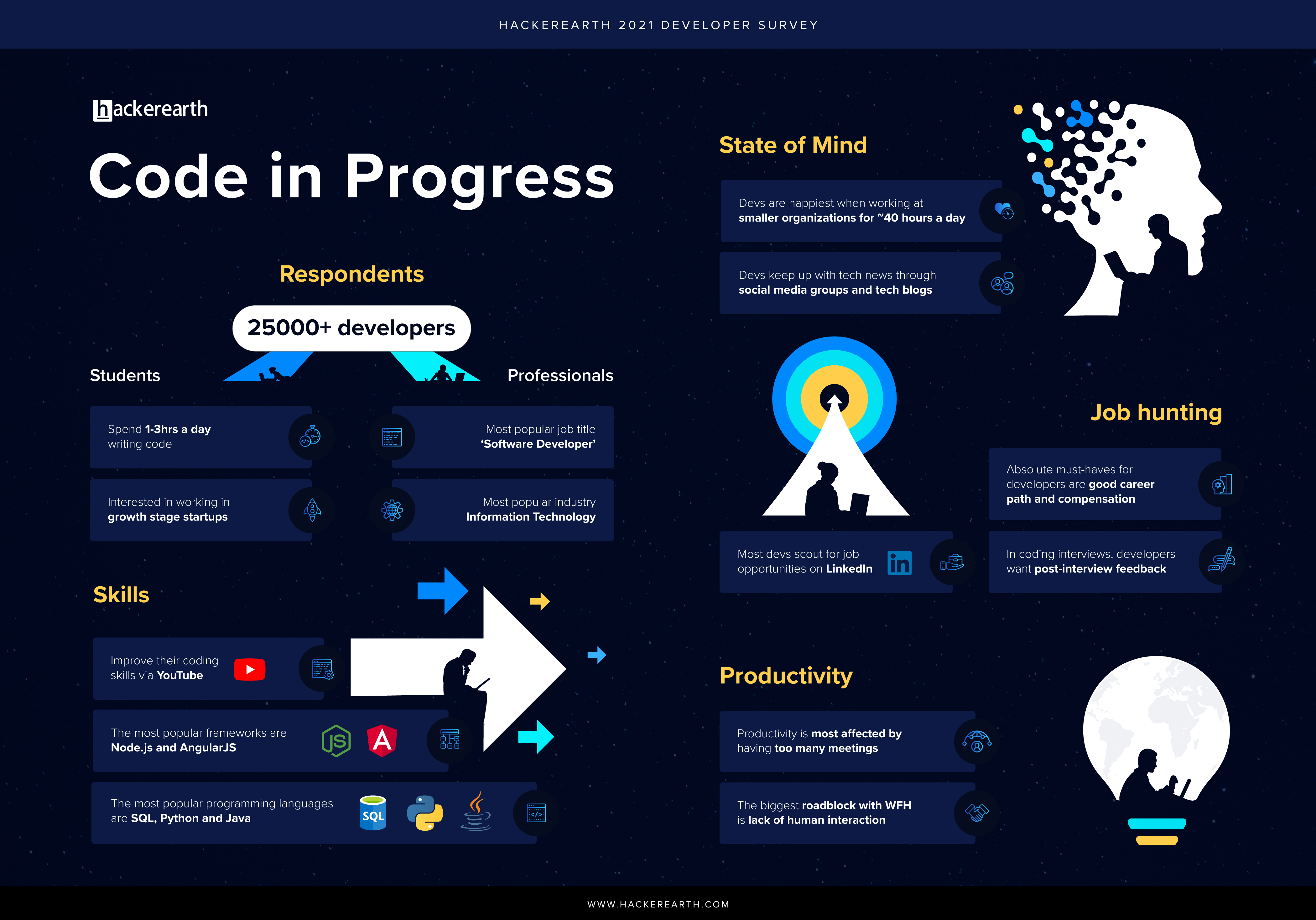Many things are easy in life; hiring and building a competent technical team is not on that list. However, including pre-employment or technical assessment tools in the recruitment process can greatly help recruiters identify talented developers.
When leveraging pre-employment tools, the key aspect is to be able to create accurate tests for a given role. Choosing an appropriate assessment tool that allows flexibility as well as automation while generating online coding tests is much needed.
To help you get an objective measure of ability in potential candidates by creating coding tests as per your specific requirements, HackerEarth Assessments allows the creation of coding tests in four different ways:
- Based on skills
- Based on job descriptions
- Based on job roles
- Custom tests
Let’s break it down for you:
Creating tests based on coding skills
We understand that many developer roles are similar across organizations, but specific skills can vary significantly. Hence, HackerEarth allows skill-based recruitment test creation for over 50 different skills ranging from basics such as C and C++ to more advanced topics such as Big Data.
Let’s say you want to recruit a frontend developer with tech skills such as HTML, CSS, and JavaScript. All you need to do is:
Step 1:
Log in to your HackerEarth Assessment account by using your admin credentials.
Step 2:
Click on Create new test and select Skills.

Step 3:
Select the desired experience level.
- Junior hire (0 to 3 years)
- Mid-level hire (4 to 6 years)
- Senior hire (more than 6 years)
Step 4:
Choose the required skills from the drop-down menu or search for a skill by typing it in the search bar.

For more information on HackerEarth Recruitment Test, click here.
Creating tests based on job descriptions
A job description enables you to put together a list of skills and criteria that a candidate is expected to meet and it can form a great base to evaluate and benchmark a candidate’s performance.
Job descriptions include the following information:
- Job title
- Summary of the role
- Desired professional experience
- Skills required for the job
- Educational level and desired qualifications
- Job ID
- Other details like a company overview, responsibilities, work environment, perks, and more
HackerEarth Assessment lets you create carefully-curated tests based on job descriptions. Built on NLP, the platform extracts the skills and experience from the description (mentioned above) and creates an assessment best suited to evaluate a candidate.
This feature extracts five crucial or majorly-required skills to select questions. The numbers and difficulty level of questions are determined based on the years of experience mentioned in the job description.
To create a test based on your job description, follow these steps:
Step 1:
Log in to your HackerEarth Assessment account by using your admin credentials.
Step 2:
Click on Create new test. Select Job description (JD) to upload your requirements for the role.

Step 3:
Click Add your job description to write your requirements between 100 and 1000 characters. You can also upload or drag and drop a file from your system file that contains the required job description by clicking Upload your job description.

Step 4:
You can view and edit the following details in this step.

To know more about creating tests based on job descriptions, click here.
Creating tests based on job roles
HackerEarth Assessments lets you create tests based on specific job roles or profiles that your organization requires. This method helps you create a standardized test for a given job role. The platform will suggest the skills relevant to the selected job role and add/modify the skills and experience to create the test.
For example, if you are required to assess software developers, the platform will suggest the required skills for a software developer and create a test based on those topics or skills.
To create a HackerEarth test based on the job titles, follow these steps:
Step 1:
Log in to your HackerEarth Assessment account by using your admin credentials.
Step 2:
Click on Create new test and select Job role.

Step 3:
Select the job title for which you want to create the test (For instance, Software Developer.)

Step 3:
Once you select the job role, this is how it appears on your screen.

Step 4:
You can view and edit the following details in this step.

To know more about creating tests based on job roles, click here.
Creating custom coding tests
Custom tests on HackerEarth Assessment allow you to create a test customized to your needs. It allows you to build a test from scratch by selecting desired questions from the library or adding your own custom questions.
To create a custom test on HackerEarth, follow these steps:
Step 1:
Log in to your HackerEarth Assessment account by using your admin credentials.
Step 2:
Click on Create new test and select Custom.

Step 3:
You will be redirected to a dashboard where you can create your own questions or select questions from the pre-built question library. Additionally, you can change and modify the settings as per your requirements.

Advantages of using HackerEarth for creating coding tests
- Extensive skill coverage: Offers over 1000+ different skills ranging from basic to advanced topics, ensuring comprehensive test creation for various roles.
- Customization and flexibility: Allows for the creation of custom tests tailored to specific needs, along with options to choose from pre-built questions or add custom ones.
- Integration with job descriptions: Utilizes NLP to extract skills and experience from job descriptions, enabling tests that are closely aligned with role requirements.
- Role-specific test creation: Facilitates the development of standardized tests for specific job roles, with suggested skills relevant to the selected job title.
- User-friendly interface: The platform's intuitive design makes it easy to create and manage tests, enhancing the user experience for recruiters.
- Advanced analytics: Provides detailed analytics and insights about candidate performance, aiding in more informed hiring decisions.
- Scalability: Suitable for organizations of various sizes, supporting both small-scale and large-scale recruitment processes.
- Enhanced candidate experience: Focuses on a smooth test-taking experience for candidates, which can positively influence their perception of the hiring company.
To learn more about custom tests, click here.
Try using these features and let us know how they work for you.
If you need any help on how to use them, write to us at support@hackerearth.com and we will be happy to help.
If you’re new to HackerEarth and want to create accurate coding assessments, sign up for a 14-day free trial.














































